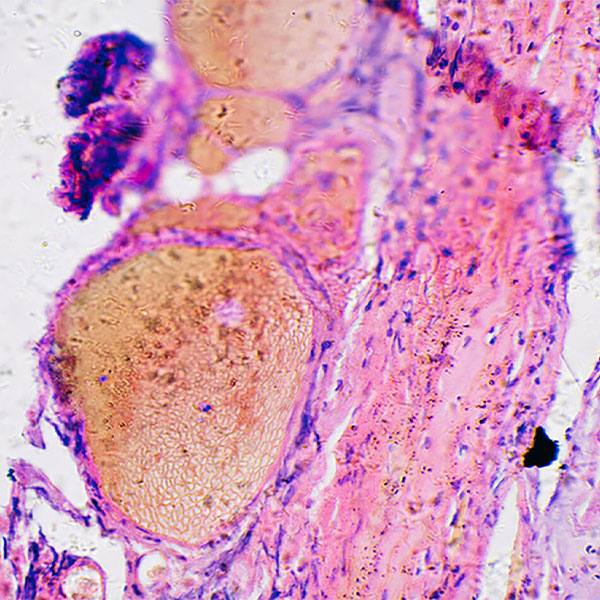-
Research
Your Job or Your Life, Beta Cell
As the last two years have demonstrated, stressful situations often require trade-offs. For some, the COVID-19 pandemic meant a shift in their primary focus on work to a broader, more environmental view. In a sort of nanoscale parallel, Mayo Clinic scientists report on a similar response in a group of pancreatic cells under the stress of Type 2 diabetes.
These cells ― called beta cells ― produce the hormone insulin essential for the regulation of blood sugar levels in the body. In Type 2 diabetes, beta cells do not produce enough insulin to control blood sugar after a meal.
And now researchers may know why.
The researchers examined beta cell biology from humans with Type 2 diabetes and found increased production of a protein linked to the regulation of cellular pH. If it's been a while since Chemistry 101, remember that pH is a measure of hydrogen ions, exchanged during chemical reactions in cells. Cell activity changes pH to be more acidic, so cells use buffer molecules and "portholes" in the cell membrane to consistently maintain a pH level that allows for normal cell function.
Working collaboratively, three discovery science labs at Mayo report in The Journal of Clinical Investigation that when stressed by obesity and Type 2 diabetes, human beta cells respond by making more of a protein called NBCe1 which is encoded by gene SLC4A4. It helps the cell bring in chemical buffers, such as bicarbonate, to offset acidity. This increase in production of NBCe1 allowed the cells to survive for longer, but it decreased the ability of beta cells to produce and release insulin in response to sugar.

Image created with BioRender.
To test the importance of NBCe1 increase in beta cells, the researchers developed a mouse model where the genetic instructions for making the protein were excluded. They found that in those mice, the beta cells continued to produce and secrete insulin normally, even when fed a diet designed to induce obesity and Type 2 diabetes. When diabetic human beta cells were treated with a drug that inhibits NBCE1, the ability of those cells to properly secrete insulin was restored.
In the U.S., 13% of adults had diabetes, according to a 2018 report from the Centers for Disease Control and Prevention. Of that population, 90% – 95% have Type 2 diabetes and a slightly smaller subset ― 89% ― also report overweight or obesity. Understanding the mechanisms that lead to prediabetes and eventually to diabetes could provide new strategies for preventing or treating diseases associated with these states. Understanding the steps a beta cell takes to manage stress, and what effect that has on the beta cell's job, helps scientists and clinicians get a full picture of what is going wrong to help figure out how to put it right.
The main labs collaborating on the publication are led by Aleksey Matveyenko, Ph.D.; Michael Romero, Ph.D.; and Y.S. Prakash, M.D., Ph.D. Matthew Brown, a student in Mayo Clinic Graduate School of Biomedical Sciences, is the lead author. Other authors from Mayo Clinic are Heather Holmes; Kuntol Rakshit, Ph.D.; Naureen Javeed, Ph.D.; Tracy Her; Alison Stiller; and Satish Sen, Ph.D.
Funding for this work came from federal grants and Mayo Clinic's Center for Biomedical Discovery. See the paper for full author list and funding.







